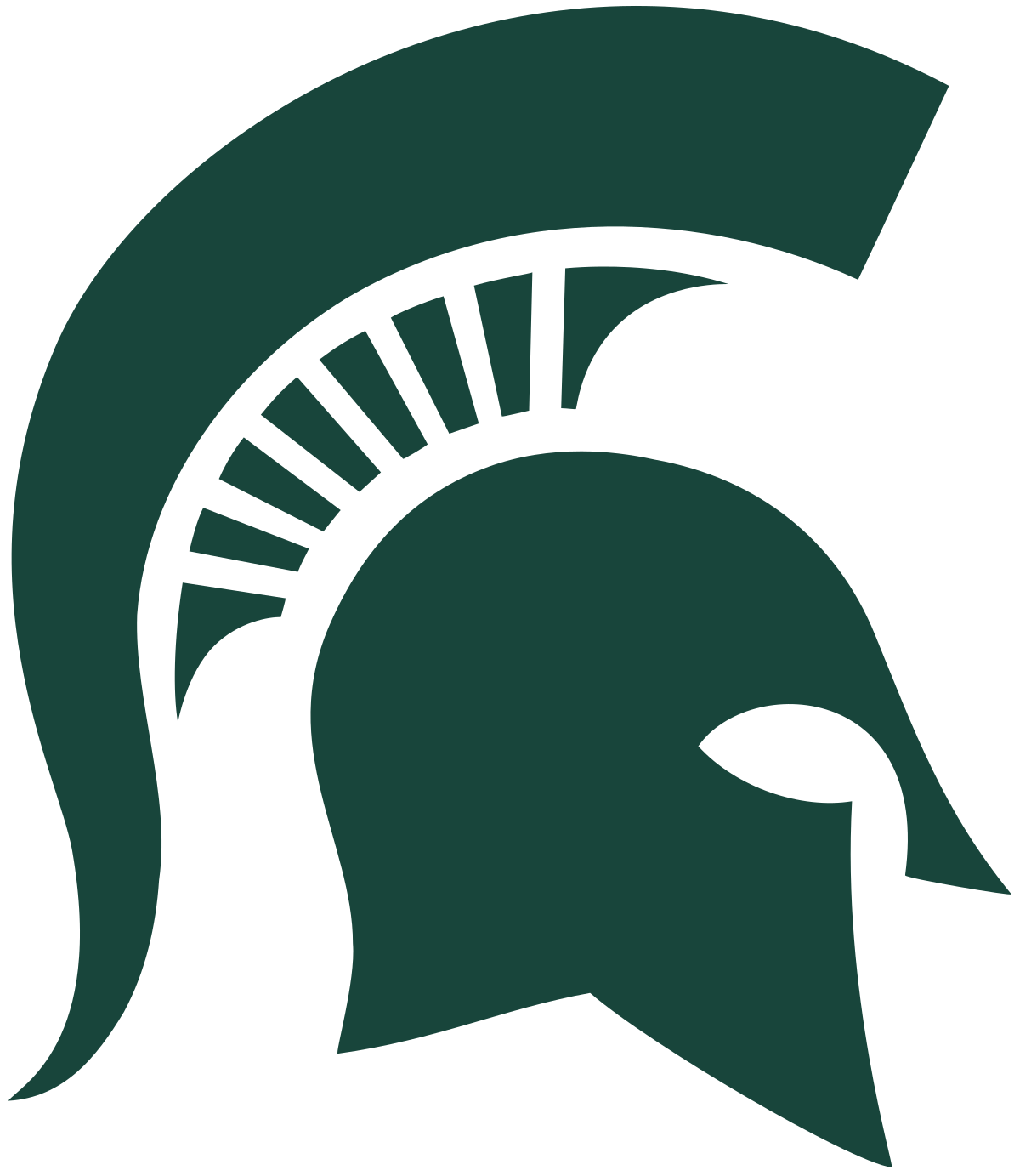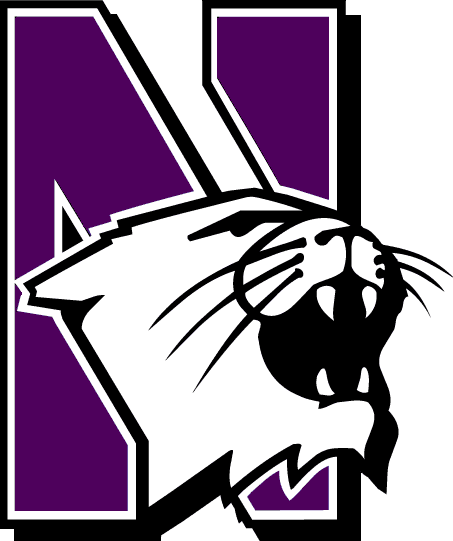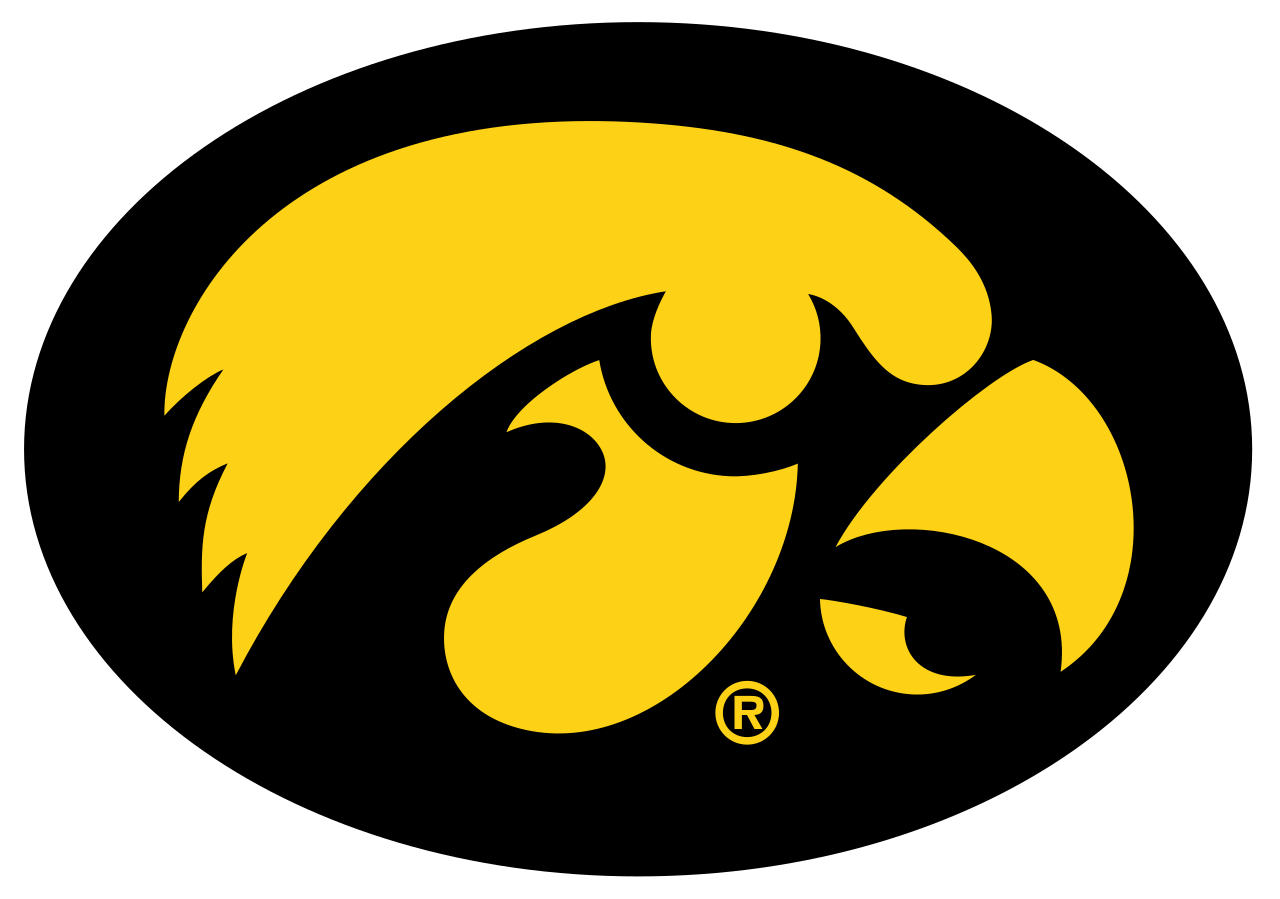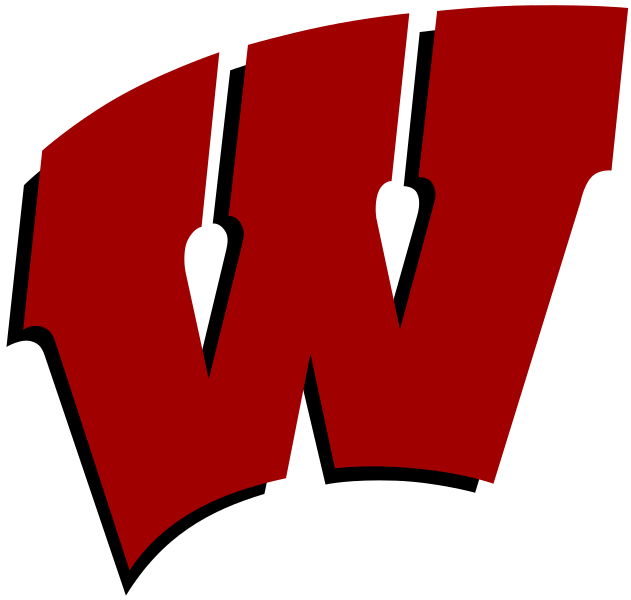BRIDGEPORT, Pa. — The home division for schools holding a combined seven previous Men’s National Collegiate Club Championships, the Big Ten Division is the center of attention this week in the Club Spotlight series. In 2019, Indiana University, Michigan State University, Northwestern University, Purdue University, The Ohio State University, the University of Illinois, the University of Iowa, the University of Michigan and the University of Wisconsin fielded teams in the Big Ten Division.
HISTORY: The Big Ten Division became part of the CWPA prior to the 2010 season after previously competing as an independent group for a number of seasons.
In the history of the group, three teams have claimed the division crown since their admittance into the CWPA as Michigan (2011, 2012, 2015, 2016, 2017, 2018), Michigan State (2010, 2014, 2019) and Indiana (2013) have combined for all 10 championships.
At the National Collegiate Club Championship, the Big Ten Division schools made their marks since the start of the event in 1993 with Northwestern (1993), Michigan (1996, 1998, 2003) and Michigan State (2000, 2006, 2008) combining for seven crowns, while MSU has also placed second twice (2005, 2007) all prior to 2010.
Big Ten Division Champion/Runner-Up
- 2010 – Michigan State University / University of Michigan
- 2011 – University of Michigan / Michigan State University
- 2012 – University of Michigan / Indiana University
- 2013 – Indiana University / Michigan State University
- 2014 – Michigan State University / University of Michigan
- 2015 – University of Michigan / University of Illinois
- 2016 – University of Michigan / Northwestern University
- 2017 – University of Michigan / Indiana University
- 2018 – University of Michigan / Michigan State University
- 2019 – Michigan State University / Ohio State University
National Collegiate Club Champion/Runner-Up
- 1993 – Northwestern University / University of Maryland
- 1996 – University of Michigan / University of Arizona
- 1998 – University of Michigan / Pennsylvania State University
- 2000 – Michigan State University / University of Washington
- 2003 – University of Michigan / California Polytechnic State University
- 2005 – Grand Valley State University / Michigan State University
- 2006 – Michigan State University / Grand Valley State University
- 2007 – California Polytechnic State University / Michigan State University
- 2008 – Michigan State University / California Polytechnic State University
THE TEAMS: Featuring teams from Illinois (Illinois, Northwestern), Indiana (Indiana, Purdue), Iowa (Iowa), Michigan (Michigan, Michigan State), Ohio (Ohio State) and Wisconsin (Wisconsin), the schools of the Big Ten Division have been a consistent challenger for the National Collegiate Club Championship since the commencement of the event in 1993.
 Indiana University
Indiana University
The 2013 Big Ten Division Champion and a two-time runner-up (2012, 2017), the Hoosiers of Indiana University have rated among the top teams in the division over the past seven years with eyes on going the pattern into the future.
“I love the water polo team at IU because the group of guys here welcomed me immediately,” states goalie/2019 team Most Valuable Player (MVP) Logan Bradshaw. “They are an incredibly fun group of people, but also know when it’s time to bear down and focus. It’s only been one year with the team but it feels like I’ve known them longer, and the experiences I’ve had already will be memories I’ll keep forever. I couldn’t have asked for a better team to join in college.”
“I have gotten the opportunity to play water polo for the past nine years of my life, and I’m very glad I get to continue playing it at IU. This team is a very special group of people to be around in and out of the water.”
Led by head coach Akari Hatanaka – the only female coach of a men’s club team in the Big Ten Division – Indiana gives back to its community and trains outside the water too.
Hatanaka, a classicaly trained violinist, recently designed a mask pattern for comfortable, best fit, reusable/machine washer and dryer safe masks and fundraised for supplies. She is currently producing and donating the masks to healthcare professionals around the country during the Coronavirus pandemic.
To aid in preparing for next season, the team is currently conducting Zoom meetings with special guests (e.g. former National Collegiate Athletic Association (NCAA) champions, nutrition experts). Further, team members have taken on roles to oversee nutrition, strength and conditioning and the mental aspect of the game to put the Hoosiers back on top in 2020.
“I like being a part of the team because of all the close friendships I have made,” adds Matthew Woodruff. “I love how unconditionally supportive the boys are, and it’s a great feeling to be part of such a fun community.
Located in Bloomington, Indiana, and founded in 1820 as the “State Seminary” before the name was changed to “Indiana College” in 1829 and finally “Indiana University” in 1839, the school has numerous programs, including the Jacobs School of Music, the Luddy School of Informatics, Computing, and Engineering, the O’Neill School of Public and Environmental Affairs, the Kelley School of Business, the School of Public Health, the School of Nursing, the School of Optometry, the Maurer School of Law, the School of Education, the Media School and the Hamilton Lugar School of Global and International Studies.
The College of Arts and Sciences is the largest of the university’s academic divisions and home to more than 40 percent of its undergraduates. There are more than 50 academic departments in the College, encompassing a broad range of disciplines from the traditional (such as Anthropology, Art History, Biology, Biochemistry, Chemistry, Classics, English, Economics, Geography, History, Mathematics, Philosophy, Physics, Political Science, Psychology, Religious Studies, and Sociology) to more modern and specialized areas, including Jewish Studies, History and Philosophy of Science and Medicine, and International Studies. Through the College, IU also offers instruction in over 50 foreign languages, one of the largest language study offerings at any American university. IU is the only university in the nation that offers a degree in Hungarianand is the first university in the United States to offer a doctorate in Gender Studies. The College is also home to the Department of Folklore and Ethnomusicology, the first formally established academic department in folklore at any United States university and the only such department to integrate these two practices into one field. The College also houses IU’s Department of Theatre, Drama, and Contemporary Dance which offers a Bachelor of Arts in Theatre, a BFA in Contemporary Dance, a Master of Fine Arts in Acting, Directing, Playwriting or Design/Technology and a BFA in Musical Theatre.
Approximately 44,000 students attend Indiana University. While 55.1% of the student body is from Indiana, students from all 50 states, Washington, D.C., Puerto Rico and 165 countries were also enrolled. The university is home to an extensive student life program, with more than 750 student organizations on campus and with around 17 percent of undergraduates joining the Greek system.
Indiana’s faculty, staff, and alumni include nine Nobel laureates, 17 Rhodes Scholars, 17 Marshall Scholars, and five MacArthur Fellows. In addition, students and alumni have won six Academy Awards, 49 Grammy Awards, 32 Emmy Awards, 20 Pulitzer Prizes, four Tony Awards, and 104 Olympic medals (55 gold, 17 silver, and 32 bronze).
For more information on the Indiana men’s collegiate club team, contact either Trip Truman (tktruman@iu.edu) or Andrew Albrecht (andalbre@iu.edu).
- Facebook (@MensWaterPoloIU)
- Twitter (@MenWaterPoloIU)
Michigan State University
Coming off a Fifth Place finish at the 2019 Men’s National Collegiate Club Championship hosted by the University of Pittsburgh, the Spartans of Michigan State University have a storied history of success in men’s collegiate club water polo.
A three-time Big Ten Division Champion (2010, 2014, 2019), MSU captured a trio of National Championships between 2000 to 2008 as the team took the 2000, 2006 and 2008 titles with runner-up finishes in 2005 and 2007.
The reigning division champion, MSU dominated the All-Conference selections in the division with five players earning recognition and head coach Matt Latham taking home Coach of the Year accolades for the second year in a row.
The Spartans, who earned the inaugural Top Five finish at the National Collegiate Club Championship since 2010, credits, “the intense work ethic of our players and coach, as well as the support of our fans and alumni,” per Zach Sneathen for the program’s resurgent success.
Located in East Lansing, Michigan, Michigan State is true to the school’s motto, “Advancing Knowledge, Transforming Lives”, as the school founded in 1855 as the Agricultural College of the State of Michigan, one of the country’s first institutions of higher education to teach scientific agriculture, has expanded its curriculum to over 200 fields of study. Among the largest universities in the United States with close to 50,000 undergraduate and graduate students enrolled during an academic year, the school now has approximately 634,300 living alumni worldwide.
Although successful in the pool, MSU’s performance in the classroom is unrivaled as U.S. News & World Report ranked its graduate programs the best in the U.S. in elementary teacher’s education, secondary teacher’s education, industrial and organizational psychology, rehabilitation counseling, African history, supply chain logistics and nuclear physics in 2019. MSU pioneered the studies of packaging, hospitality business, supply chain management, and communication sciences. The university’s campus houses the National Superconducting Cyclotron Laboratory, the W. J. Beal Botanical Garden, the Abrams Planetarium, the Wharton Center for Performing Arts, the Eli and Edythe Broad Art Museum, the Facility for Rare Isotope Beams and the country’s largest residence hall system.
Further, Michigan State’s study abroad program is among the 10 largest of any single-campus university in the United States with 2,755.
The school utilizes a rolling admissions system, with an early admission deadline in October. For the Class of 2022 (enrolling Fall 2018), MSU received 33,129 applications and accepted 25,733 (77.7%), with 8,688 enrolling.
For more information on the Michigan State men’s collegiate club team, contact either Zach Sneathen (sneathe4@msu.edu), Ewan Woolcock (woolcoc6@msu.edu) or head coach Matt Latham (msupolocoach@gmail.com).
- Facebook (@msuwaterpolo)
- Instagram (@msu_waterpolo)
- Twitter (@MSU_WaterPolo)
- Website (https://www.msumenswaterpolo.com)
 Northwestern University
Northwestern University
The inaugural Men’s Collegiate Club Champion by taking the 1993 title versus the University of Maryland, the Wildcats of Northwestern University are the only private university among the Big Ten Division membership.
Located in Evanston, Ill., approximately 12 miles outside Chicago, Northwestern, which finished second in the Big Ten Division during the 2016 season, is known for its Kellogg School of Management, Pritzker School of Law, Feinberg School of Medicine, Bienen School of Music, Medill School of Journalism, Media, Integrated Marketing Communications, School of Communication and McCormick School of Engineering and Applied Science.
The university’s former and present faculty and alumni include 19 Nobel Prize laureates, 38 Pulitzer Prize winners, six MacArthur Genius Fellows, 16 Rhodes Scholars, 65 members of the American Academy of Arts and Sciences and two Supreme Court Justices. Northwestern’s School of Communication is a leading producer of Academy Award, Emmy Award and Tony Award–winning actors, actresses, playwrights, writers and directors.[17]
Founded in 1851 by John Evans, for whom the city of Evanston is named, the university offers 124 undergraduate programs and 145 graduate and professional programs. The four-year, full-time undergraduate program comprises the majority of enrollments at the university and emphasizes instruction in the arts and sciences, plus the professions of engineering, journalism, communication, music, and education. Although a foundation in the liberal arts and sciences is required in all majors, there is no required common core curriculum; individual degree requirements are set by the faculty of each school. Northwestern’s full-time undergraduate and graduate programs operate on an approximately 10-week academic quarter system with the academic year beginning in late September and ending in early June. Undergraduates typically take four courses each quarter and twelve courses in an academic year and are required to complete at least twelve quarters on campus to graduate. Northwestern offers honors, accelerated, and joint degree programs in medicine, science, mathematics, engineering and journalism.
Admissions are extremely selective. For the Class of 2022, 40,425 applications for the undergraduate class were submitted. For early decision, 1,072 out of 4,049 applicants were admitted, for an acceptance rate of 26%. In regular decision, 2,320 out of 36,518 applicants were admitted, for an acceptance rate of 6.35%. In total, 3,392 out of 40,425 applicants were admitted for an overall acceptance rate of 8.4%, making Northwestern one of the most selective schools in the United States.
For more information on the Northwestern men’s collegiate club team, contact Jake Cvetas (waterpolo@u.northwestern.edu).
- Facebook (@NUWaterPolo)
Purdue University
Purdue University was founded in 1869 after Lafayette businessman John Purdue donated land and money to establish a college of science, technology and agriculture in his name. The first classes were held on September 16, 1874, with six instructors and 39 students with the school now boasting 3,055 academic instructors and 43,411 students on the main campus in West Lafayette, Indiana.
The school offers more than 200 majors for undergraduates, over 69 masters and doctoral programs, and professional degrees in pharmacy and veterinary medicine. In addition, Purdue has more than 900 student organizations and enrolls the second largest student body of any university in Indiana, as well as the fourth largest foreign student population of any university in the United States.
Purdue offers both undergraduate and graduate programs in over 211 major areas of study, and is well known for its competitive engineering curricula. The university has also been integral in America’s history of aviation, having established the first college credit offered in flight training; the first four-year bachelor’s degree in aviation; and the first university airport: Purdue University Airport. Purdue’s aviation technology and aeronautical engineering programs remain among the most competitive aviation-specific programs in the world. In the mid-20th century, Purdue’s aviation program expanded to encompass advanced spaceflight technology, giving rise to Purdue’s nicknames Cradle of Astronauts. 23 Purdue graduates have become astronauts, including Gus Grissom, one of the original Mercury Seven astronauts; Neil Armstrong, who was the first person to walk on the moon; and Eugene Cernan, who was the last person to walk on the moon.
Associated with 13 Nobel Prizes, the Boilermakers are a diverse mix of students. Last year, 8,562 students from 126 different countries around the world came to Purdue University. In 2012–13, 19,689 out of a total of 39,256 students enrolled were Indiana residents. Further, among the undergraduate students, 42.6% were female.
For more information on the Purdue men’s collegiate club team, contact either Lawrence Cozzi (lcozzi@purdue.edu) or William Holzer (wholzer@purdue.edu).
- Twitter (@PurdueWaterPolo)
- Website (https://www.purdue.edu/recwell/programs/clubSports/clubs/waterPolomens.php)
 The Ohio State University
The Ohio State University
The newest program in the group, The Ohio State University climbed to near the pinnacle of the division standings in 2019 by finishing second at the program’s inaugural Big Ten Division Championship.
A four-time Great Lakes Division Champion (2013, 2014, 2017, 2018) and past runner-up (2016), the Buckeyes joined the Big Ten Division prior to the 2019 season, placed second in the regular season and dropped a 13-10 decision in the title game to Michigan State University to prevent the program from punching its ticket to the Men’s National Collegiate Club Championship at the University of Pittsburgh.
Founded in 1870 as the Ohio Agricultural and Mechanical College to originally focus on various agricultural and mechanical disciplines, the school developed into a comprehensive university under the direction of then-Governor (later, United States President) Rutherford B. Hayes, and in 1878 the Ohio General Assembly passed a law changing the name to “The Ohio State University”. The main campus in Columbus, Ohio, has since grown into the third-largest university campus in the United States.
Ohio State operates the North America’s 18th-largest university research library with a combined collection of over 5.8 million volumes. Additionally, the libraries regularly receive about 35,000 serial titles. Its recent acquisitions were 16th among university research libraries in North America. Along with 21 libraries on its Columbus campus, the university has eight branches at off-campus research facilities and regional campuses, and a book storage depository near campus. In all, the Ohio State library system encompasses 55 branches and specialty collections. Some more significant collections include The Byrd Polar Research Center Archival Program, which has the archives of Admiral Richard E. Byrd and other polar research materials; The Hilandar Research Library, which has the world’s largest collection of medieval Slavic manuscripts on microform; the Ohio State Cartoon Library & Museum, the world’s largest repository of original cartoons; The Lawrence and Lee Theatre Research Institute; and the archives of Senator John Glenn.
The Ohio State University is among the top 12 U.S. public research universities and third among all universities in industry-sponsored research. It is also named as one of the most innovative universities in the nation placing seventh among public universities and 11th overall, while also ranking third among all American universities for private industry sponsored research. Research facilities include Aeronautical/Astronautical Research Laboratory, Byrd Polar Research Center, Center for Automotive Research (OSU CAR), Chadwick Arboretum, Biomedical Research Tower, Biological Sciences Building, CDME, Comprehensive Cancer Center, David Heart and Lung Research Institute, Electroscience Laboratory, Large Binocular Telescope (LBT, originally named the Columbus Project), Mershon Center for International Security Studies, Museum of Biological Diversity, National Center for the Middle Market, Stone Laboratory on Gibraltar Island, OH, Center for Urban and Regional Analysis and Ohio Agricultural Research and Development Center.
The university has an extensive student life program, with over 1,000 student organizations; intercollegiate, club and recreational sports programs; student media organizations and publications, fraternities and sororities; and three student governments.
Undergraduate admissions to Ohio State are classified as the most selective for any public university in Ohio as 67% of incoming freshmen in autumn 2017 were ranked in the top 10% of their high school class. Ohio State’s freshman class has included at least 100 National Merit Scholars for nine of the last 10 years.
For more information on the Ohio State men’s collegiate club team, contact either Alex Puthoff (puthoff.49@osu.edu) or Ryan Shepard (shepard.180@osu.edu)
- Twitter (@OSUWaterpolo)
- Website (https://www.ohiostatewaterpolo.com)
University of Illinois
The 2015 Big Ten Division Championship runner-up, the University of Illinois (also known as the University of Illinois at Urbana-Champaign) located in the twin cities of Champaign and Urbana, is the flagship institution of the University of Illinois system and was founded in 1867.
A major center of research, the campus library system possesses the second-largest university library in the United States by holdings after Harvard University. Further, the university also hosts the National Center for Supercomputing Applications (NCSA) and is home to the fastest supercomputer on a university campus.
The university offers more than 150 undergraduate and 100 graduate and professional programs in over 15 academic units, among several online specializations such as Digital Marketing and an online MBA program launched in January 2016.
Affiliated with 30 Nobel laureates, two Turing Award winners and 1 Fields medalist, Illinois recently added a medical school as the Carle-Illinois College of Medicine began classes in 2018. In addition, the school also operates a Research Park home to innovation centers for over 90 start-up companies and multinational corporations, including Abbott, AbbVie, Caterpillar, Capital One, Dow, State Farm, and Yahoo, among others.
As of spring 2018, the university had 45,813 students. As of 2015, over 10,000 students were international students, and of them 5,295 were Mainland Chinese – more than any other American university. The university also recruits students from over 100 countries among its 32,878 undergraduate students and 10,245 graduate and professional students.
For more information on the Illinois men’s collegiate club team, contact either Jake Burke (jburke28@illinois.edu) or Matthew Flanders (mwf2@illinois.edu)
- Twitter (@IlliniMensWPolo)
- Website (http://illinimenswaterpolo.weebly.com/)
 University of Iowa
University of Iowa
Founded in 1847 and located in Iowa City, Iowa, the University of Iowa (which is formally known as the State University of Iowa) is the oldest and the second largest university in the state. The University of Iowa is organized into 12 colleges offering more than 200 areas of study and seven professional degrees.
The university is best known for its programs in health care, law, and the fine arts, with programs ranking among the top 25 nationally in those areas. The university was the original developer of the Master of Fine Arts degree and it operates the Iowa Writer’s Workshop, which has produced 17 of the university’s 46 Pulitzer Prize winners.
Among American universities, the University of Iowa was the first public university to open as coeducational in 1855, opened the first coeducational medical school, and opened the first Department of Religious Studies at a public university. In addition, Iowa was the world’s first university to accept creative work in theater, writing, music, and art on an equal basis with academic research.
The university has educated many of the state’s professionals including 79% of Iowa’s dentists, 50% of Iowa’s physicians, 48% of Iowa’s pharmacists, as well as teachers and administrators in each of the state’s K–12 school districts.
For more information on the Iowa women’s collegiate club team, contact either Kenneth Velu (kenneth-velu@uiowa.edu) or Matthew Burrows (matthew-burrows@uiowa.edu).
- Website (https://uiowa.campuslabs.com/engage/organization/water-polo-team-university-of-iowa-men-s)
University of Michigan
The most successful team in the Big Ten Division since 2010, the Wolverines of the University of Michigan hold six championships (2011, 2012, 2015, 2016, 2017, 2018) and a pair of runner-up finishes (2010, 2014) over the past 10-years.
A three-time Men’s National Collegiate Club Champion (1996, 1998, 2003), the Maize & Blue have combined with fellow Wolverine State institution Michigan State University (2010, 2014, 2019) to combine for nine of the division’s 10 titles since the acceptance of the Big Ten into the Collegiate Water Polo Association (CWPA) prior to the 2010 season.
The oldest university in the state of Michigan, the school was founded in 1817 in Detroit, Michigan, as the Catholepistemiad, or University of Michigania, 20 years before the territory became a state. The school was moved to Ann Arbor in 1837 and has expanded to include more than 584 major buildings with a combined area of more than 34 million gross square feet.
Admissions are highly competitive, with an admit rate of 22.8%. In recent years, annual numbers of applications for freshman admission have exceeded 65,000. Around 15,000 students are admitted annually, with a target freshman class of more than 6,000 students. Students come from all 50 U.S. states and more than 100 countries. The university has an enrollment of 44,718 students: 28,983 undergraduate students, 12,565 graduate students and 2,665 first professional students as full-time students make up about 97 percent of the student body and the university has a first-time student retention rate of 97 percent.
As of October 2019, 25 Nobel Prize winners, six Turing Award winners and one Fields Medalist have been affiliated with the school. Its comprehensive graduate program offers doctoral degrees in the humanities, social sciences, and STEM fields (science, technology, engineering, and mathematics) as well as professional degrees in architecture, business, medicine, law, pharmacy, nursing, social work, public health and dentistry. Michigan’s body of living alumni comprises more than 540,000 people, one of the largest alumni bases of any university in the world.
For more information on the Iowa women’s collegiate club team, contact either Andrew Golin (agolin@umich.edu) or Dan Rusca (drusca@umich.edu).
- Facebook (@MichiganMensWaterPolo)
- Twitter (@MichiganManPolo)
- Website (http://umich.edu/~umpolo/)
 University of Wisconsin
University of Wisconsin
Following a Third Place finish during the Big Ten Division regular season in 2019 and a Fourth Place mark at the championship tournament, the Badgers of the University of Wisconsin have consistently been among the group’s Top Five teams.
In the mix to win the Big Ten Division and make the program’s inaugural conference title game, Wisconsin has posted second (2015), third (2017, 2019), fourth (2016) and fifth (2018) place finishes during the regular season with third (2015, 2018), fourth (2016, 2019) and sixth (2017) place marks at the conference championship since 2015.
Founded in 1848 when Wisconsin achieved statehood and located in Madison, Wisconsin, the school remains the oldest and largest public university in the state. Located on the shores of Lake Mendota, UW–Madison is organized into 20 schools and colleges, which enrolled 30,361 undergraduate and 14,052 graduate students in 2018. Its academic programs include 136 undergraduate majors, 148 master’s degree programs and 120 doctoral programs. A major contributor to Wisconsin’s economy, the university is the largest employer in the state with over 21,600 faculty and staff.
As of March 2020, 25 Nobel laureates, two Fields medalists and one Turing award winner have been associated with UW–Madison as alumni, faculty, or researchers. Additionally, the current CEOs of 14 Fortune 500 companies have attended UW–Madison, the most of any university in the United States.
Home to 44,413 students (30,361 undergraduate / 14,052 graduate), Wisconsin is home to one of the leading programs in the field of science as the school has been the site of multiple advances including the single-grain experiment (which marked the birth of modern nutrition science), the discovery of vitamins A and B, the development of the anticoagulant medication warfarin and the first synthesis of human embryonic stem cells.
Student life is vibrant at Wisconsin as over 750 student organizations or clubs register with the Center for Leadership and Involvement each year.
For more information on the Wisconsin men’s collegiate club team, contact Christian Fuhrman (badgermenspolo@gmail.com)
- Facebook (@wisconsinmenswaterpolo)
- Website (https://win.wisc.edu/organization/menswaterpolouw)

